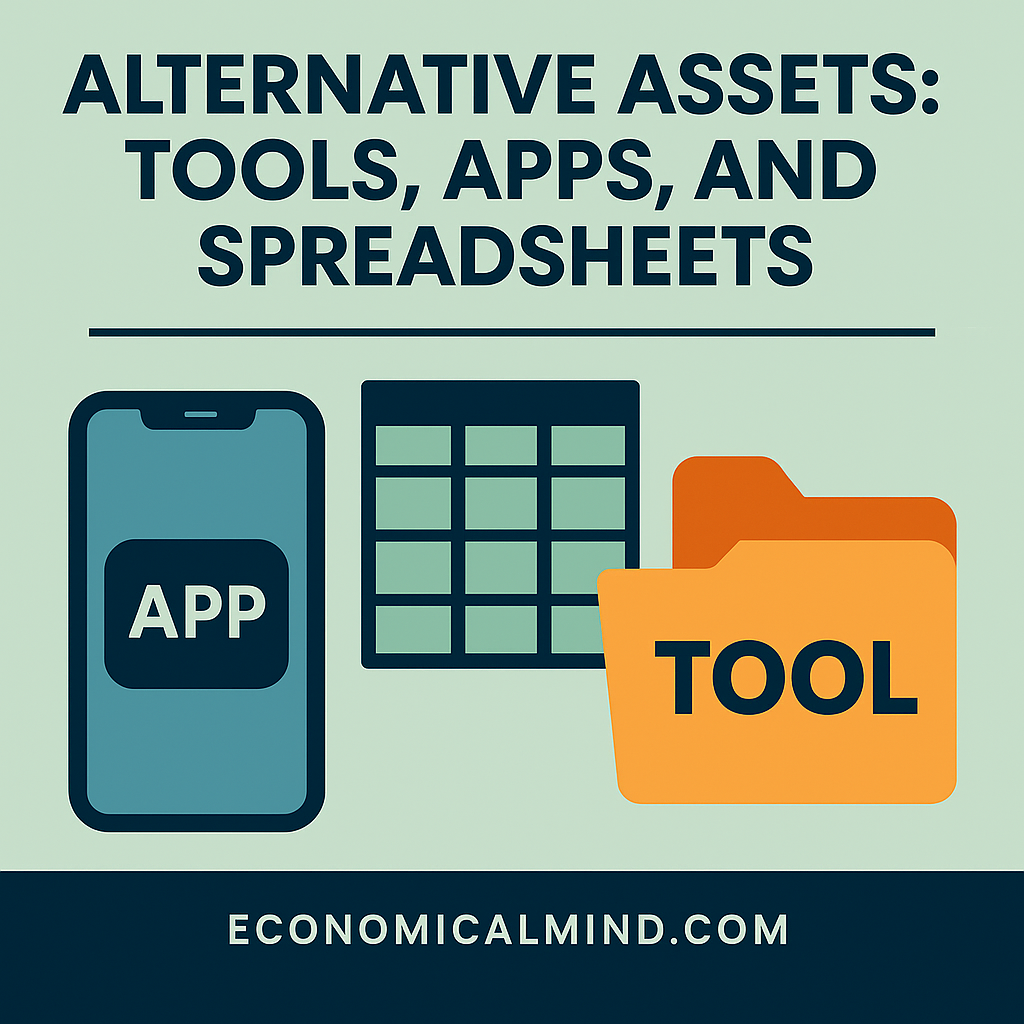
When the stock market gets unpredictable, many investors turn to alternative assets for diversification and long-term stability. These assets — including real estate, commodities, private equity, and even digital collectibles — can strengthen your portfolio when traditional investments fall short.
With the right tools, apps, and spreadsheets, managing these alternatives becomes far easier and more transparent.
What Are Alternative Assets?
Alternative assets are investments that fall outside traditional stocks, bonds, or mutual funds. They can offer higher returns, unique risk profiles, and protection against inflation. Common types include:
• Real estate – Direct ownership or REITs for income and appreciation.
• Commodities – Gold, silver, and oil as inflation hedges.
• Private equity and venture capital – Investments in private businesses and startups.
• Hedge funds – Managed funds with flexible strategies for market ups and downs.
• Cryptocurrency and blockchain assets – High-risk, high-reward investments.
• Art, collectibles, and wine – Tangible assets that combine rarity with emotional appeal.
Diversifying with these assets can balance your portfolio and reduce volatility during market swings.
Why Investors Use Alternative Assets
• Diversification – Alternatives often move differently from the stock market.
• Inflation protection – Hard assets like real estate and commodities can maintain value over time.
• Potential for higher returns – Especially in private markets and venture capital.
• Access to new industries – From tech startups to renewable energy funds.
However, these assets often come with higher risk, lower liquidity, and more complex management requirements.
The Best Tools for Managing Alternative Investments
• Yieldstreet – Provides fractional access to private market investments like art, real estate, and litigation finance.
• Masterworks – Lets investors buy shares of high-value artworks.
• Alto IRA – Enables investing in crypto, startups, and real estate through a self-directed IRA.
• Fundrise – Simplifies real estate investing with eREITs for steady income potential.
• Koyfin – Visual analytics for tracking both public and private market data.
These platforms help investors diversify beyond the typical brokerage account and monitor performance in real time.
Tracking Alternative Assets with Spreadsheets
Spreadsheets remain one of the best tools for visualizing returns and risk across different assets. You can easily build one to track:
• Asset type (real estate, crypto, etc.)
• Purchase date and cost basis
• Current valuation
• Annualized returns
• Fees and management costs
• Liquidity rating
Adding simple formulas can calculate ROI, diversification percentages, and total net worth exposure. This keeps your entire portfolio transparent and manageable.
Apps for Monitoring and Analysis
• Kubera – Consolidates alternative investments, crypto, and traditional assets in one dashboard.
• CoinStats – Great for tracking cryptocurrency holdings and DeFi positions.
• Personal Capital (Empower) – Allows tracking of all assets, including private equity and REITs.
• Morningstar Portfolio Manager – Offers research insights into fund performance and diversification balance.
Each app helps centralize performance tracking, removing the need for multiple spreadsheets or manual updates.
Common Mistakes to Avoid
• Overexposure to illiquid assets – Avoid locking too much of your capital in investments you can’t sell quickly.
• Ignoring fees – Private equity and hedge funds often charge high management costs.
• Neglecting valuation reviews – Tangible assets like art or collectibles require periodic reassessment.
• FOMO investing – Just because an alternative asset is trending doesn’t mean it’s suitable for your goals.
The Takeaway
Alternative assets can strengthen your portfolio by adding depth and protection against volatility. With the right tools, apps, and spreadsheet systems, you can track performance, manage risk, and make confident investment decisions that go beyond the stock market.
